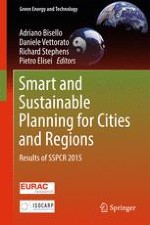2017 | OriginalPaper | Buchkapitel
Co-benefits of Smart and Sustainable Energy District Projects: An Overview of Economic Assessment Methodologies
verfasst von : Adriano Bisello, Gianluca Grilli, Jessica Balest, Giuseppe Stellin, Marco Ciolli
Erschienen in: Smart and Sustainable Planning for Cities and Regions
Aktivieren Sie unsere intelligente Suche, um passende Fachinhalte oder Patente zu finden.
Wählen Sie Textabschnitte aus um mit Künstlicher Intelligenz passenden Patente zu finden. powered by
Markieren Sie Textabschnitte, um KI-gestützt weitere passende Inhalte zu finden. powered by
